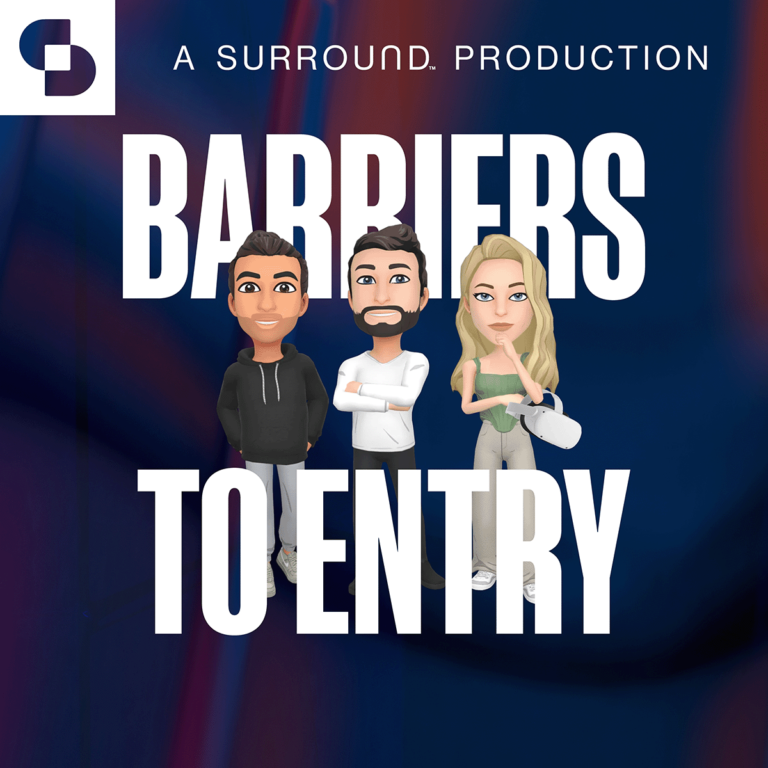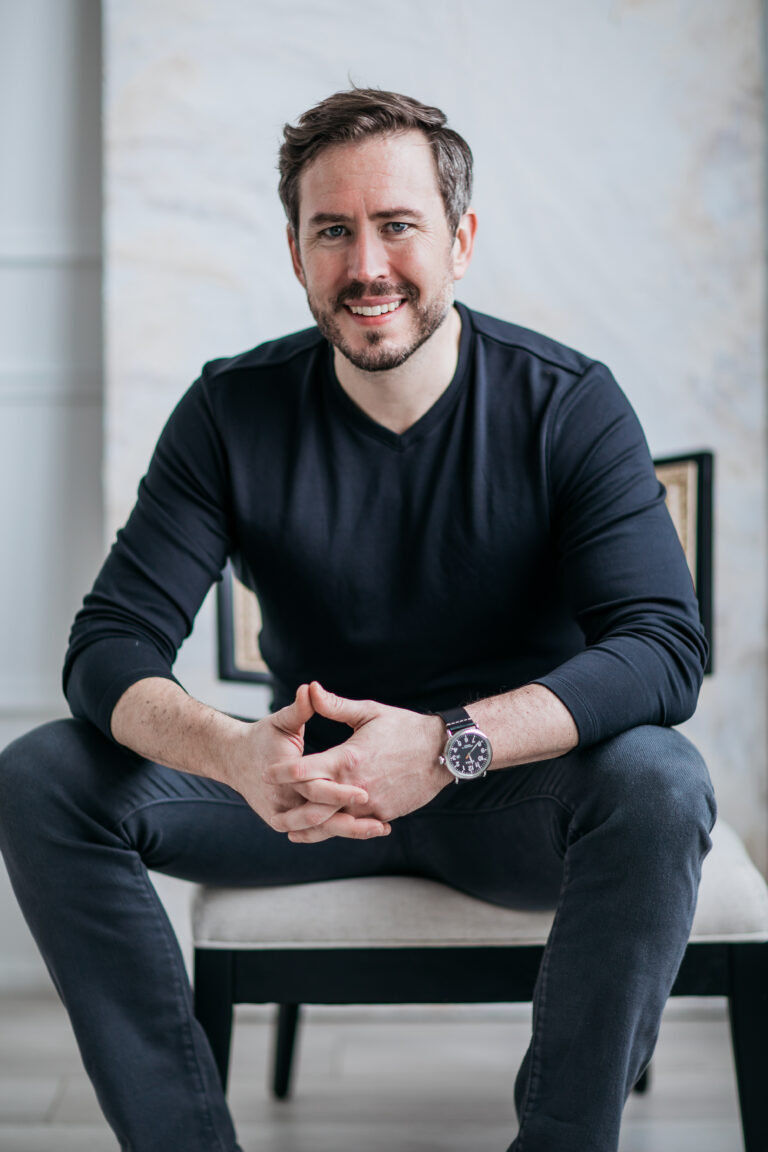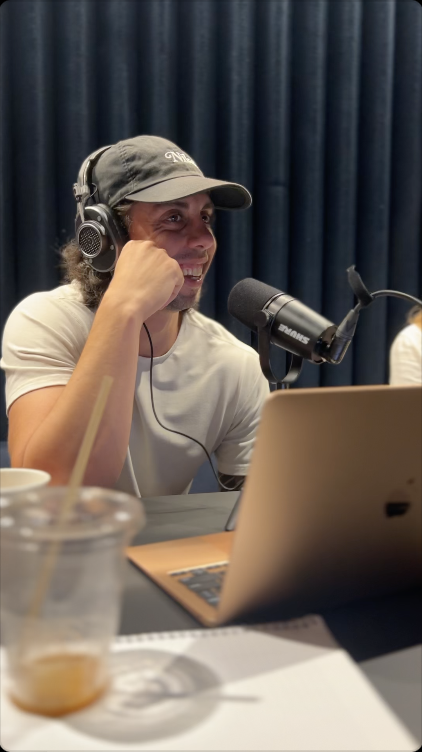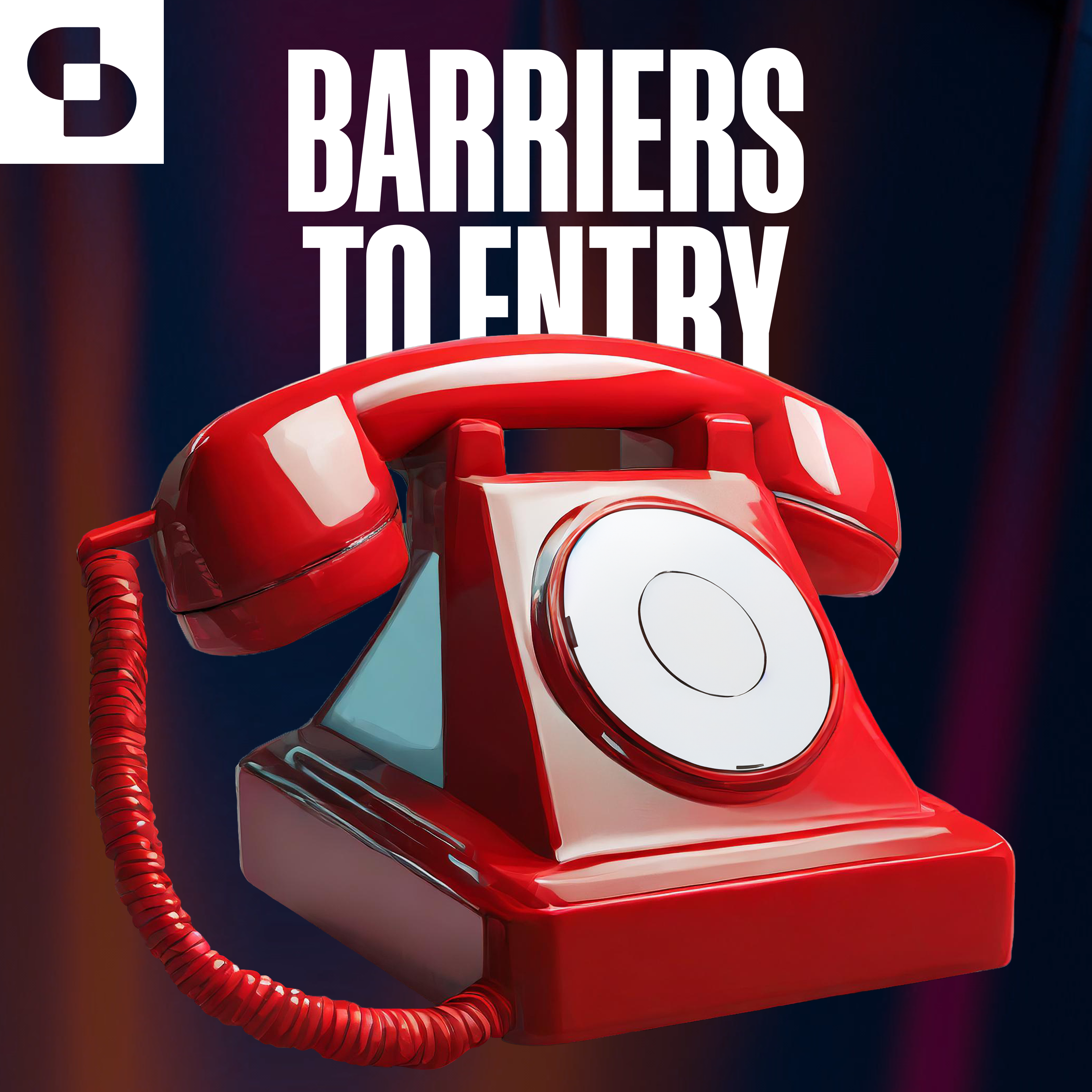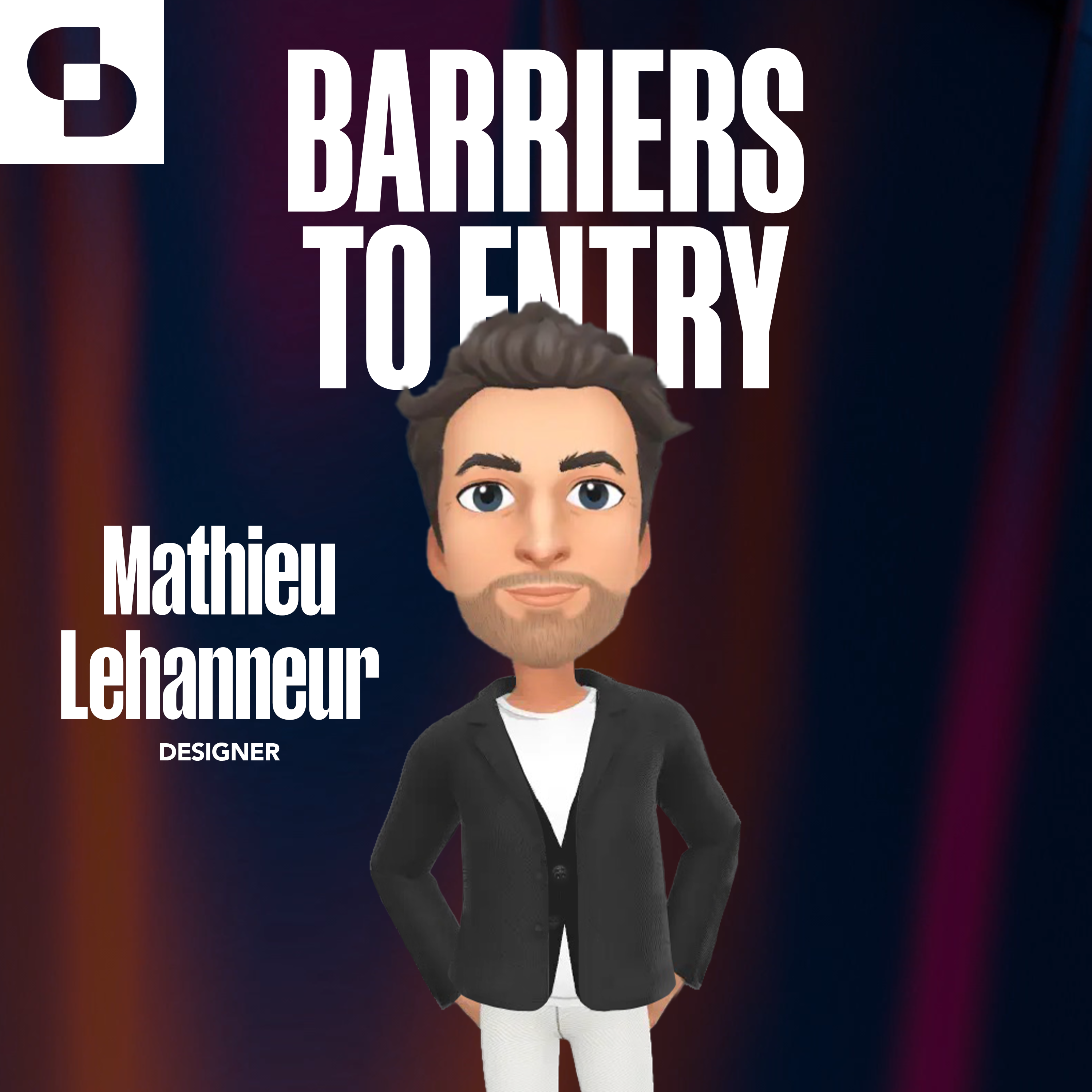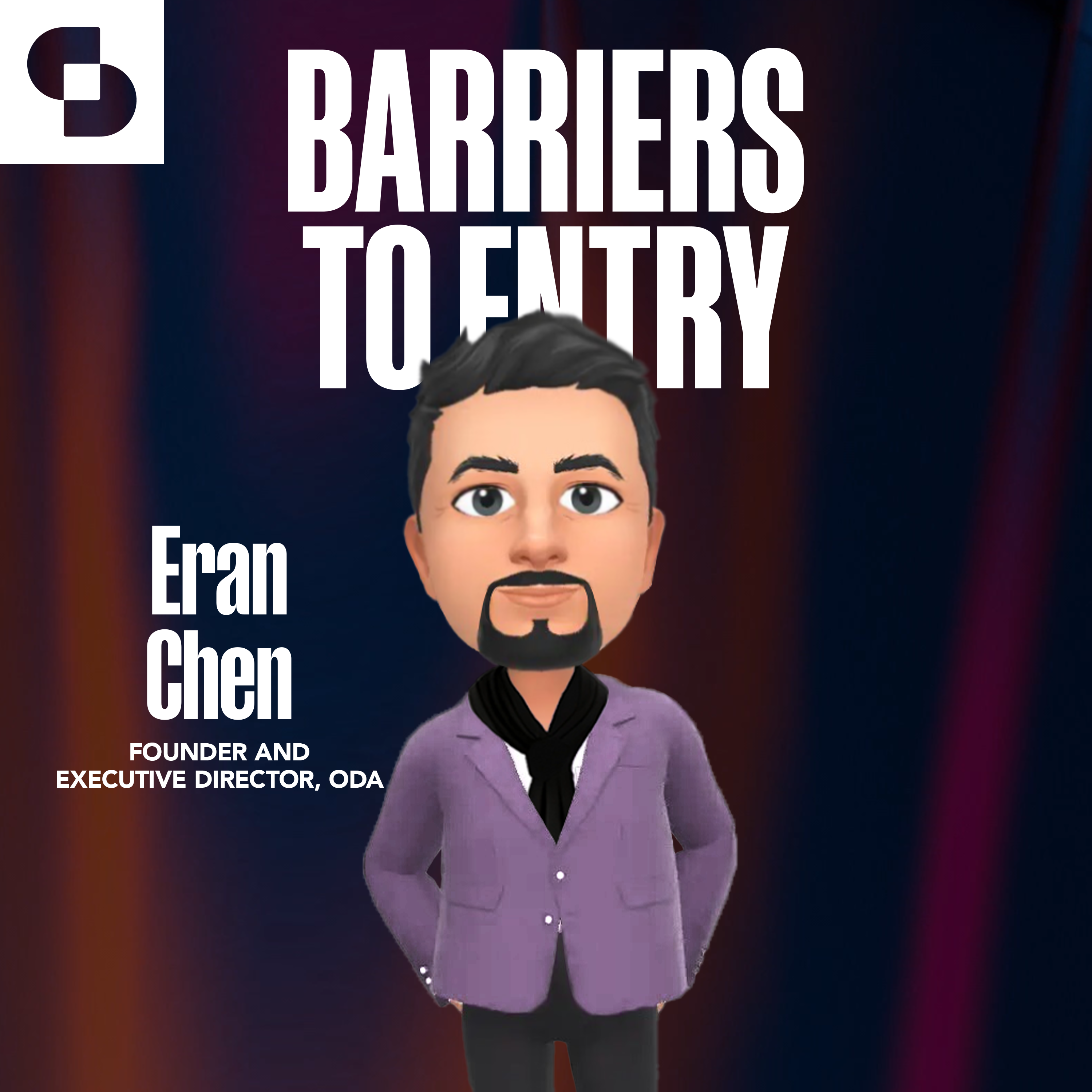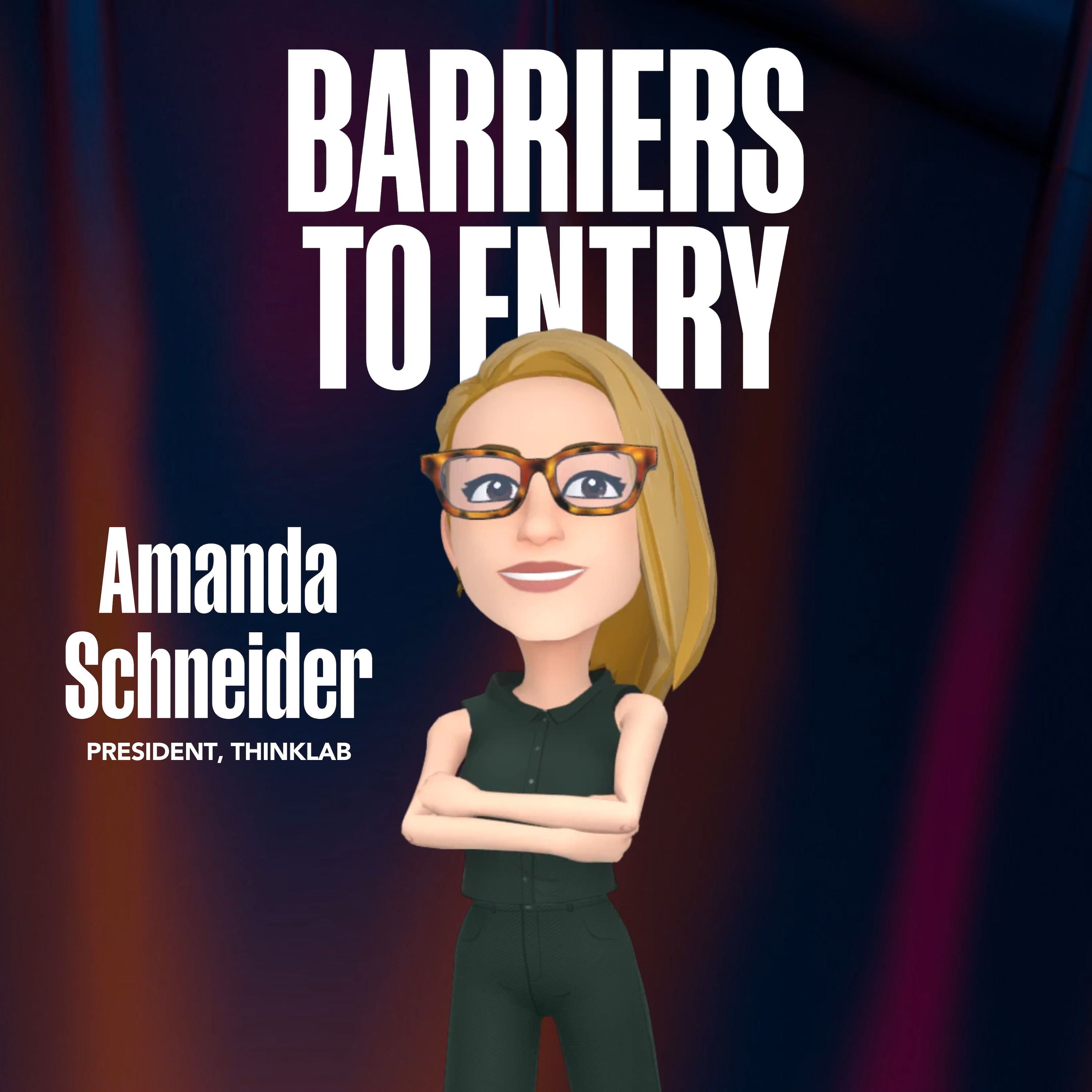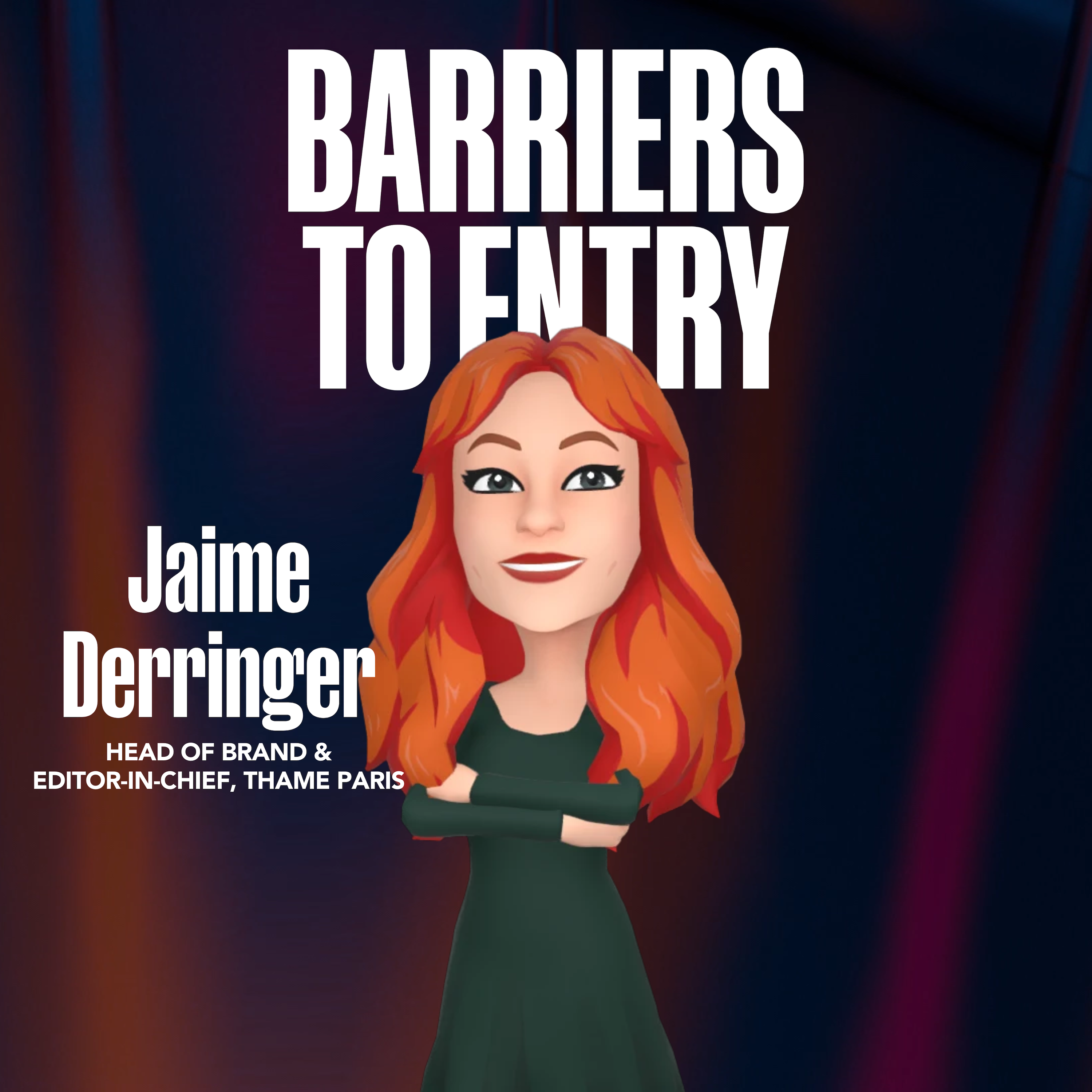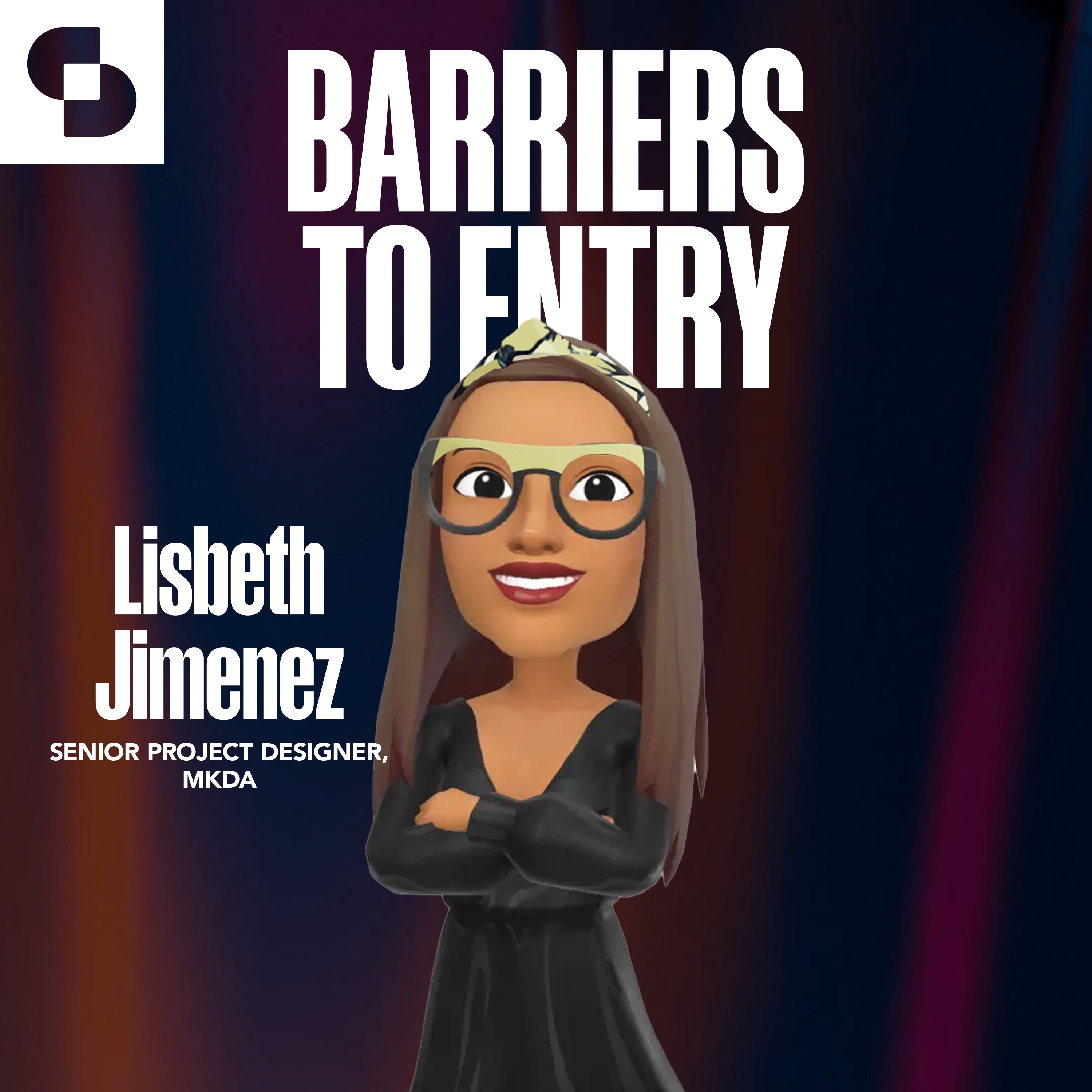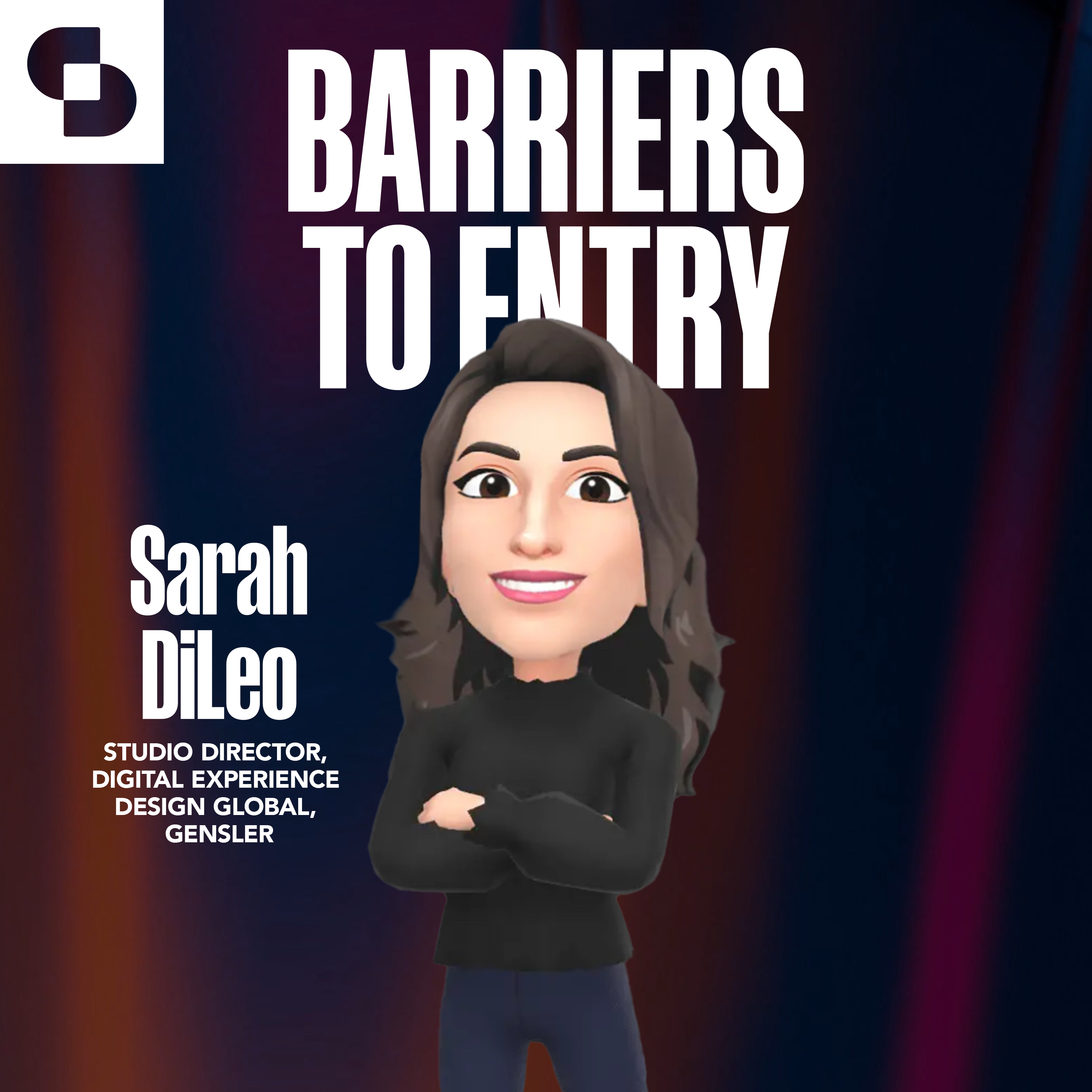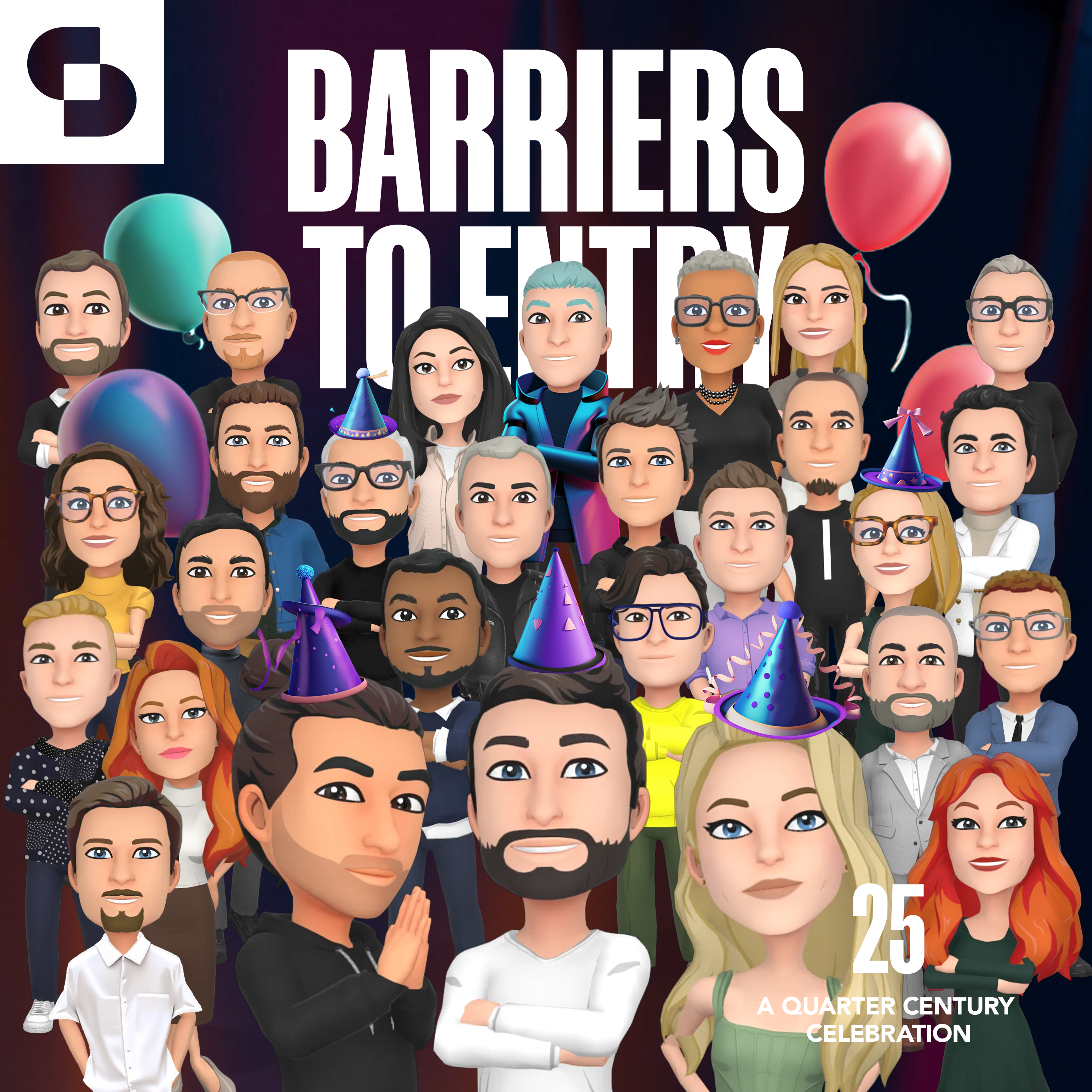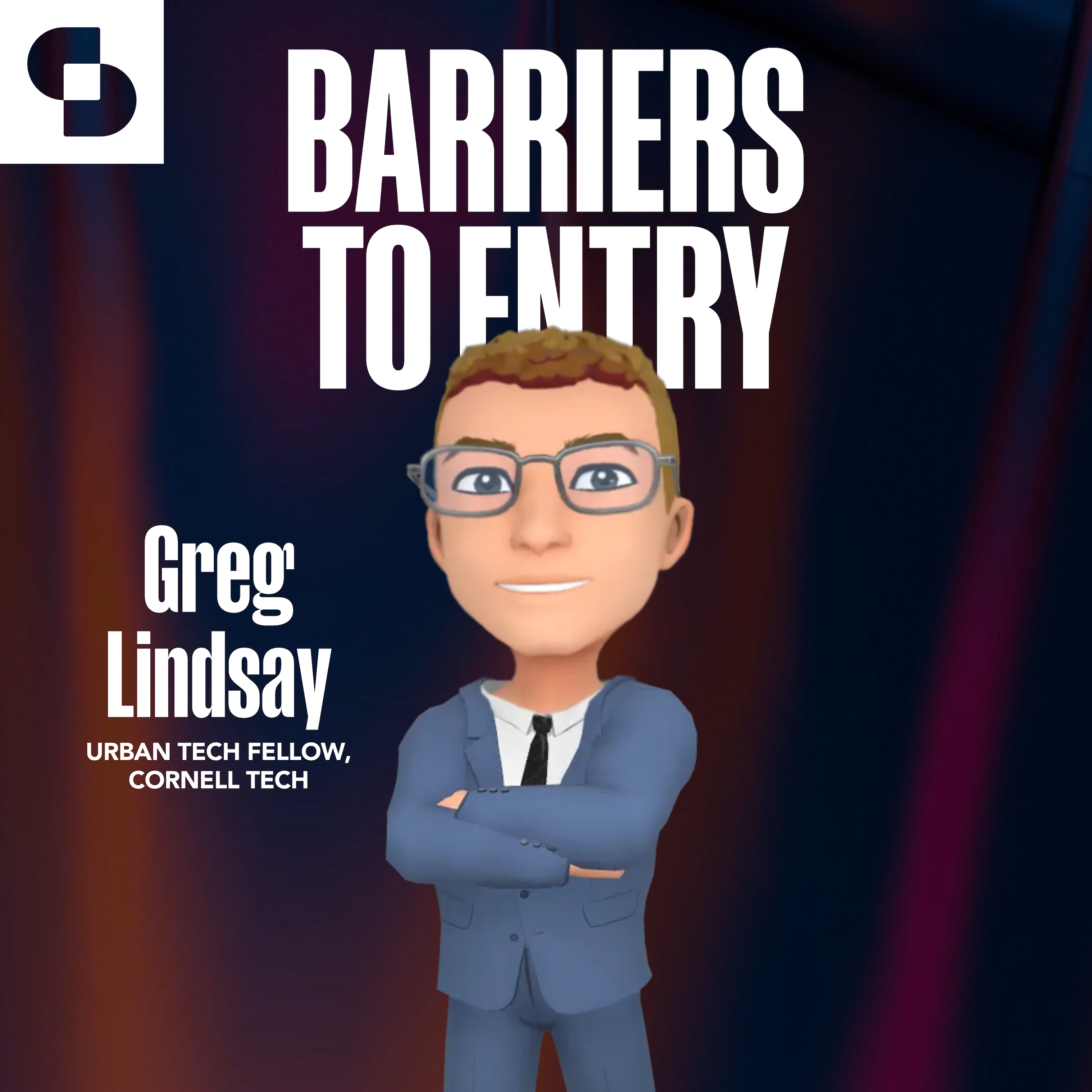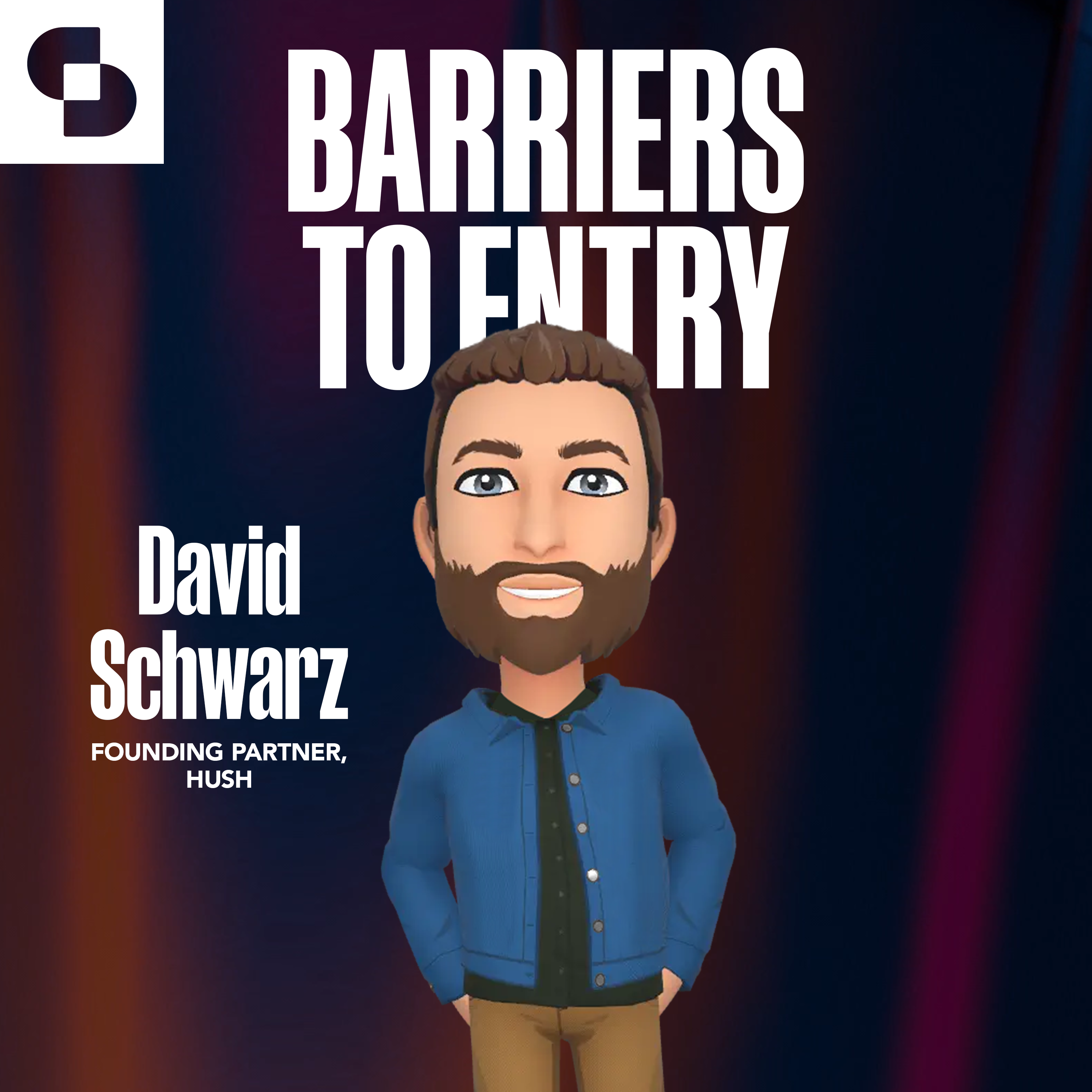Coming to America
Fresh off having moderating a packed house panel at SXSW, Bobby and Andrew are joined by luxury brand-building powerhouse, and fellow podcast host, Lisa Gralnek. Recently named the US Managing Director and Global Head of Sustainability & Impact for the prestigious iF DESIGN organization based in Hannover Germany, Lisa drops in for a conversation about everything from the future of design, to pushing boundaries, to the impact of technology on the design industry. Of course they also deep dive into the importance of sustainability in design’s future all before introducing Bobby and Andrew to their new favorite portmanteau, “Glocalization”.
Connect with our hosts on LinkedIn:
Follow Lisa Gralnek on Linkedin
References and resources:
iF DESIGN AWARD 2025 application opens on April 26th
2024 Winners’ Gala takes place in Berlin April 29th
The 3rd Annual iF Design Trend Report will be published on April 30th
Lisa’s podcast – Future of XYZ
Andrew guests on Future of XYZ – April 25, 2024
Find it on: Apple, Spotify, Instagram, ripbs.org/XYZ, future-of.XYZ
Related and referred BTE Episodes:
Avi Rajagopal, on sustainability
Rodolfo Agrella, on pushing boundaries in design
Get in touch with us with your questions on emerging technology, innovation and more at [email protected] or drop us a voicemail at the BTE Hotline at 1-917-934-2812.
Discover more shows from SURROUND at surroundpodcasts.com.
This episode of Barriers to Entry was produced by Rob Schulte.
Learn more about your ad choices. Visit megaphone.fm/adchoices
This transcript was generated in part by an automated service. In some cases errors will occur.
Lisa: [00:00:00] I think UX is going to be the catch all that is like the design of the future that will incorporate everything and it needs to be looked at through a lens of inclusivity. So social equity, as well as sustainability. So do less harm and build in the default to be better environmental stewards.
Andrew: Welcome to Barriers to Entry.
A design innovation podcast on the Surround Podcast Network. This is the show where we obsess over the not too distant future of the architecture, design and creative industries and the ideas, the tools, the technologies, and the talent that will take us there. I’m Andrew Lane, co founder at Digby and with me as always.
Is Bobby Bonett the chief growth officer at Sandow Design Group? Hey Bobby, how’s it going?
Bobby: Hey Andrew, it is great to be with you here And I am wondering where our former tri host Tess Bain is here today Do you mind sharing an update on Tess and Digby for the listeners and I?
Andrew: Wow got right into
Bobby: it.
Andrew: Why not?
Yeah, I know our three headed monster, uh is Coming back to an occasional two, uh, as we move forward, um, you know, I think that we’ve sporadically updated the listeners that we have a couple of businesses, Tess and I, and Digby is the one where we bring innovation to the forefront in the industry and obviously get excited about our conversations here.
But we also import furniture under the brand, the house of Digby. And, uh, you know, Tess and I, as both businesses continue to grow, have decided to focus on the leadership of each of them individually. So she is going back to her natural home in the world of design furniture and really focusing on growing that business this year.
So she’s going to stick around as a friend of the podcast. I’m hoping that she’s going to be coming on as an occasional guest co host. But for now, we’re going to be cheering each other on from us while we live in the same house. So not too distant a place, but um, but that’s really what’s, what’s going on Bobby.
Bobby: Well, I’m going to make sure to work with producer Rob to see if we can book Tess on the show [00:02:00] from time to time. I know she’s got a very busy schedule, but that sounds like good news for Tess. Good news for Tess. It’s
Andrew: great news. And while we’re at it, you seem to be continuing to evolve through titles. Is this the sort of situation where, you know, uh, we’re going to.
Have a new title by the time we get to season three. Or, you know, how’s that going on at sand out design group right now?
Bobby: That’s always the plan. New title, a new season. That’s kind of what we’re aiming for here, but good news for Tess. Uh, good news for me, I guess, but good times were had between you and I, Andrew in Las Vegas, just a couple of months ago, we got to spend quite the night together at the sphere.
Um, we won’t get too much into it right now, but maybe we’ll talk about it on a future episode. Is that the plan here?
Andrew: Yeah, I’m surprised you led with the sphere and not the, uh, the dinner, um,
Bobby: big shout out to the Grand Luxe Cafe. Yeah. Located at the, what was that? The Venetian, I believe was that was the site of
Andrew: something like that.
That was my maiden Grand Luxe Cafe voyage. So thank you for introducing me before we experienced, uh, the world stopping 3d adventure brought to us by and bring it back to the sports podcast, James Dolan of Madison square garden. And I just want to clarify James Dolan,
Bobby: this is not a sponsor of the pod. Um, but the sphere is, uh, I think a great example of where we’re going to be taking this podcast, going forward, a lot of creative conversations and then bringing it back as always to the industry of design, a fantastic creative on the show today, we’ve got an interview coming up.
coming up that, um, Andrew, I think we’re really excited to bring to the listeners. And then you’re also joining our guest today, Lisa Grelnick, on an episode of her show. Where can listeners find that great hot action? So
Andrew: Lisa’s podcast is called the future of X, Y, Z, X, Y, Z, is a podcast. Uh, fill in the blank every single time she brings on a guest.
So she’s done, she started the project in COVID and she’s done over a hundred episodes. Um, you can actually, uh, find she’s affiliated with a PBS station as well. So if you just go into your Apple, wherever you get your [00:04:00]podcast, kind of along the lines of various entry, Google future of X, Y, Z, you’re gonna be able to find that podcast.
And I think we’re launching both of these, uh, about two days apart. And I think we’re first don’t listen yet. Don’t listen yet. So wait 48 hours and then pounce and you’ll get to have a great conversation where we talk about an incredibly small topic, the future of innovation. Um, but yeah, very niche, very tiny, but no, we had a great, great chat on Lisa’s pod and we had a great chat here on barriers to entry as well.
So maybe we should just dive right in. Let’s hit the play button.
All right. We are back from a little hiatus. And we are excited to be picking up right where we left off with another exciting guest who’s driving change and innovation in our industry. Uh, joining us is the recently appointed U S managing director and global head of sustainability and impact for the prestigious IF design organization, bringing more than two decades of brand building and storytelling in the worlds of fashion, luxury, consumer goods, retail, and design in her spare time.
She’s also the creator and host of the PBS syndicated podcast, The future of XYZ, which I’m pleased to say, I’ll be a guest on in the not too distant future more on that to come. Please welcome to our pod, Lisa Gralnick. Welcome, Lisa.
Lisa: Thanks so much, Andrew. I’m thrilled to be here.
Andrew: Bobby, it’s exciting to be back and it’s super exciting to, uh, to have Lisa here with us.
Um, and I know Lisa has been really busy lately with her new mandate at IFdesign. So should we just get right into the business here?
Bobby: Yes. So Lisa, I have design is a 71 year institution still finding ways to innovate today. So you’re two years out from the first awards gala in Berlin. The first I F design trends report was released in 2022.
A digital transformation project for the organization was recently completed, and now a subsidiary for I F design is launching under your watch in New York. So can you talk about how your role in particular is designed to support the I F design brand and [00:06:00] legacy in the United States?
Lisa: Yeah, of course.
It’s a great question. I mean, first of all, thanks for having me. It’s, it’s really great to be here and to be able to share more about IF design with your audience in terms of the U S subsidiary. So we opened the subsidiary last year in June, um, just following the 2023 I have design award night. Um, and really it’s an opportunity to expand on what you mentioned.
71 year history, incredible prestige and global design community network that we have globally. And to expand that into North America in a much more meaningful way. In terms of kind of the legacy that you mentioned, you know, we’ve been committed to the values of excellence, objectivity, transparency, and impact through design since 1953.
So with the U. S. still. Arguably the world’s largest and most innovative commercial market. It’s really important to ensure that the brand’s value is recognized also here and much more broadly than it is currently. So that companies both here in the United States, but also everywhere in a global market can continue computing and elevating themselves on what is truly representative of a global stage.
Andrew: I’ve never really known Americans to shy away from the chance to win an award, but, uh, the stats say the U. S. is about a three to four percent participation rate in the program. So what are some of the things that you’re doing to really try and drive that participation and growth, uh, here in the market?
Lisa: Yeah, so I was actually really surprised when I came on and started looking at the data. So we have usually, you know, around 10, entries every year from 70 or so countries. And I was really shocked to find out, I mean, The number one winner over the course of the years, cause we keep rankings is Apple.
Apple, of course, is an American company. So when you see that, you know, they’re also recognized as probably one of the greatest design companies in the world.
Andrew: I’ve heard of them. You’ve
Lisa: heard of them, right? So it’s not surprising. And at the same time, when you dig into the numbers, it’s actually, it [00:08:00] was only really two and a half to 3 percent of the applications over the last few years have been coming out of the U S.
Um, and there are lots of reasons for that, however, you know, it really boils down to classic marketing funnel stuff, which is at the top of the marketing funnel, you have brand awareness. And so we’re really doing, you know, uh, what we can with, you know, we’re, we’re owned by a nonprofit organization, so, uh, that we’re not, we’re not a big money generating, you know, throw money at the problem, but we’re doing what we can starting with media outreach, social media, obviously.
Um, you know, getting involved with trade organizations and schools as well, these kinds of things. But of course, we do already at the bottom of that marketing funnel have our loyalists and our advocates in the form of participants like Apple and HP and Ford and Coca Cola and Pepsi and all sorts of big companies and small companies who have been participating for A very long time.
The winners who, you know, are incredibly, um, proud of their achievements and want to talk about it and it behooves them to and our jurors and our jurors are, you know, the creme de la creme in in their respective fields from around the world. So we bring in US jurors who are also extremely Please, you know, to, to share what they know and believe to be true about the IF organization.
Bobby: You mentioned, Lisa, that you were surprised to hear that percentage that Andrew referenced a moment ago, the three to 4 percent of Americans who have historically participated in the awards. How did you come into contact with the organization initially? And then how did that manifest itself into your role today as the managing director of the United States?
Lisa: Yeah, to be really candid, you know, I’ve, I, my background and we won’t go into my, my resume, anyone. It should feel free to link in with me on LinkedIn. I mean, I’ve, I’ve changed industries, geographies, functions a lot. I’ve, I’ve generally speaking, been in a strong brand building, uh, and change management style roles where strat, strategic marketing is [00:10:00] an, an impact is really kind of critical to the mission.
Um, and so I have been design adjacent, I would say, because, you know, I’ve never worked for an organization that doesn’t have design at its core. It’s just, it’s something I love, but I am not a designer. So I actually had never come in contact with most of these awards. You know, you’ve heard about like, obviously like the Oscars or you’ve heard about the Cannes Lions, you know, cause I started early on in advertising, but I didn’t know about all of these other design awards.
Um, and so I was really humbled to find out more as IF approached me and it was actually one of our Jerry chairpersons. Uh, I sat on a board with her husband of the design museum up in Boston, She’s actually in everywhere. It’s a virtual museum. Uh, and, and we had done some work together for VF Corp, uh, in the fashion and outdoors wear industry.
And she suggested that, you know, they reach out to me and they did. And it was a, it was a dance and it ultimately really made a lot of sense, but I, I hadn’t seen my career going this direction. That’s for sure. I’m thrilled to be here now.
Bobby: Yeah. So I love you bringing up marketing two or three times already in this conversation as a marketer.
Myself. Um, you mentioned change management and strategy as part of your background. What are the ways in which you’re envisioning helping the organization differentiate itself from other design based awards programs here in the States?
Lisa: I love the question, Bobby. So we’re in mutual admiration here. I think the first thing that I will say, and that’s been really exciting for me as I’ve gotten to know the organization even better and the marketplace, there are a lot of awards in the U S as, as Andrew, you alluded to Americans are not shy about like standing on stage and taking a prize, right?
They’re really excited about that. But the really important piece I think that’s, that’s worth noting is a lot of these are coming out of trade organizations. A lot of these are coming out of media publications. And there’s some others as well, but we’re very different. I mean, firstly, we are truly global, right?
I mean, that is not true for most of these others. So we get entries, as I mentioned, from over 70 countries each year, and it’s 90 if you include our Student Design Award and Social Impact [00:12:00] Prize Awards along with that, right? So, I mean, we are truly, truly global. The second is, If we’re just talking about the IF Design Award itself, we’re awarding across nine design disciplines in 82 categories.
There are very few, a couple, as broad, you know, in their reach and cross disciplinary nature. Um, I think there’s that to it. And then thirdly, Bobbi, to answer your question, I mean, Our history is huge, right? I mean, we emerged out of the post war period in Germany’s industrial manufacturing North. We’ve been running this award since the founders of the Bauhaus were part of our like very deep origin story, right?
So many of the design greats, I mean, whether you’re talking about Palomo Picasso in the eighties and nineties to Henry Kim, the global head of design for Samsung today, are. Our jury members, right? And are deeply invested in us being not only what we are, but maintaining that excellence. And I think that excellence is critically tied to our independence.
So again, our only stakeholder is the IF design foundation, which is a certified nonprofit in Germany. They invest back into design research and education. So that’s really a massive differentiator because we’re beholden really only to our mission, which is celebrating excellence.
Andrew: You mentioned so many notes there of the history that goes into, you know, the backstory of this brand. So how are you kind of capturing the essence of all of that in the way that you’re differentiating this brand, particularly with an American audience in mind?
Lisa: I think that Americans tend to be reasonably America centric, right, generally speaking.
But when you get into the design world, they’re, they’re not, because the designers themselves pull reference [00:14:00] from everywhere throughout history and time from around the world is completely interdisciplinary and completely geographically and historically agnostic. to be honest. And so I think that there’s a real argument as I, as I said early on in the conversation to putting everyone on the stage together, right?
I mean, ultimately there’s a real interest and a desire to compete and to learn from each other, to see what’s best and why it’s best. And frankly, to get feedback. You know, if you’re in a big company, oftentimes you’re only speaking within the walls of that company. You’re getting no feedback until it gets into market or maybe from some consumer reporting.
You know, and if you’re a small company, once you left design school, you’re not getting that, you know, design crit that you, you once were used to and are during process, you know, you have a preliminary jury. Give feedback that’s very detailed on five judging criteria. And if you’re in the top 50 percent after the preliminary jury and you go to the final jury, you get another round of that critical feedback with even more detail.
So, I mean, even if you don’t win, you’re getting something from the process that I think is really critical. So I think this is part of what we’re offering to the American market. Um, and then of course, to win an IF design award is good for the designers. It’s good for independent studios. It’s good for employers and their HR teams to tout.
It’s great for developing talent. And ultimately, I think it’s really good for the industry at large.
Andrew: That’s awesome to hear. Just that there’s that level of feedback like you don’t. You don’t see the time and care, not just in award shows, but in so many different processes these days where, you know, it’s, it’s exciting that your jurors are that bought in, that they’re taking the time to provide that kind of feedback and agree that that’s a, that’s a really exciting upside for anyone.
It’s
Bobby: a great value prop for somebody to enter.
Lisa: I’ll also add that if you win an eye of. You have the opportunity to come if you win just generally. But if you win an, I have gold award, which is actually 75 winners. [00:16:00] So that’s like less than 0. 5 percent of all the entries, right? We do this big award night gala in Berlin, you know, on the largest stage in Europe.
You know, it’s, I went last year, that was my first day on the job. It was a pretty cool way to 70th anniversary. Um, but you have a 16 to 1800 designers and their teams from around the world. Celebrating with cocktails, dinner and award ceremony and getting to intermix. And I mean, that is huge. And this year we’re introducing our first ever trend conference, which is all part of, you know, Berlin design week, all tied together.
That’s another great opportunity for design teams and designers to come together and not only celebrate each other and themselves, but also to learn something new.
Andrew: So it sounds like you’re not very busy, which is maybe why you took on a second job with the foundation where you’re also the global lead for sustainability and impact.
So can you tell us a little bit about between which hours and then, you know, some of the activities that you’re, uh, that you’re taking on and, and what that assignment really means for you in addition to all the exciting stuff you just shared with us.
Lisa: Yeah. So the other night it was at 3 a. m. bedtime. So, you know, there isn’t really time in the day to do all of the jobs, but this one is really meaningful to me.
Uh, it’s a major reason, you know, why I was really interested also in this opportunity because, you know, I’ve built a lot of brands and I’ve been involved in that and I’ve been passionate since I was a little girl about the environment and nature. I, I say nature is my religion, you know, and after my first, career was in fashion, very high in luxury.
And after those first eight years, I went back to grad school to do sustainability and luxury. And unfortunately I graduated into the collapse of 08 and no one, especially not in luxury, was talking about sustainability. So I’ve kind of been sustainability impact adjacent since. Although I’ve also in my last six years as a consultant was really heavily invested in in the impact space So I know a lot about it and I’m really passionate about it [00:18:00] And this is not my first chief sustainability officer type head of a sustainability type role And I’m really excited that we’re we’re investing I don’t find a lot of time but the most meaningful thing that we need to do is Really not look at sustainability on the side not do greenwashing But really deeply in bed if we are the world’s Largest, most independent and certainly one of the most prestigious design awards committed to excellence
Rob: in
Lisa: the world.
Sustainability and impact are a topic that is imperative to the future state of design for us all. So primary focus is really how do we embed a sustainability criteria, both environmental and social. into the judging process, and we’re making strides each year. Last year was the first year. The 2025 award will be, uh, even more so, and we’ll continue, um, going forward.
You know, I think we have to bring our participants and our jurors along with us.
Bobby: Not many people know this, but our, Senior producer Rob Schulte has two titles, senior producer for surround and head of sound effects for sound out design group. Um, so we’ll see if he pops in later, um, to show that off at all.
So Lisa, you, you mentioned the importance of, it’s not tokenizing sustainability. I’m not trying to put words in your mouth, but not having a sustainability award amongst everything else that I have designed does. But it’s embedded, like you said, in the during process, for example. What about like from an educational standpoint with the folks who are part of the I F design organization as relates the jurors who are within the organization?
One thing that struck Andrew and I, when we had a conversation with David Schwartz from the hush team several months ago was the impact that technology can have or the negative impact technology can have from a sustainability standpoint. And I’m just wondering, like in the course of everything else you’re, you’re thinking about doing and as it relates to integrating sustainability into IF design, what are ways in which you need to educate entrants, jurors, the organization, so they can understand every step of the process or, or, or through every [00:20:00] step of the process, how sustainability needs to be kept top of mind?
Lisa: It’s a fantastic question, and it’s a really it is the critical question, Bobby. I think not just for I have designed, but for the industry at large, and I would argue all industries and not just the design industries, right? I think the main thing is, first of all, we’re not doing this alone. Um, we are assembling, have assembled and will continue to grow, uh, a sustainability working group of outside advisors and experts who can, you know, you know, Provide their input and help us kind of drive this forward first and foremost.
So we’re not doing it alone. We’re not pretending we know everything. I certainly don’t. Um, and again, when you’re talking about 82 categories of design, plus obviously like, you know, 90 countries being touched by this, it’s really imperative that we get it right and that we’re representing, um, and including kind of all the different points of view.
The second piece of it is we are. Taking a very strong stance on bringing people along. So last year at the award night, it was announced that this is really an important commitment, and this is what we did in 2023 in 2024. You will see this this year. We had two sustainability experts in the final jury in Berlin.
You know, and how we went through that process.
Bobby: Does that get contentious at all? When you have a, when you have two sustainability leaders on the juror who might point out, well, wait a second, we have to evaluate this in a different way.
Lisa: We set up the parameters such that it was very clear and everyone has bought in on what their role was, which is much more an advisory role and a recommendation.
role. Um, and providing, you know, Hey, what about this polymer? For instance, they’re claiming it’s, you know, made with tea leaves. Does this actually mean anything? Etcetera. So I think that we really have done a really good job and we’ll continue to get better with the feedback as we go. Um, but right now, as I was starting to say, like our, Our intention is to reward the good and not to punish the bad, right?
Not everyone is along the same journey. Not everyone can. Different markets have different objectives. Smaller companies have [00:22:00] different opportunities, right? And the science isn’t necessarily entirely 100 percent there. The credentialities, you know, and the validations aren’t 100 percent bought in. What we can say is we are not Greenwashing.
We just made a statement for ourselves internally on what do we believe about carbon offsets, right? So these are the kinds of things that we’re really kind of looking at. You asked about technology. I mean, there’s, with all good things, there come challenges. And I think that, you know, the certifications, the alliances, the supply chain collaborations and verifications are great.
The material innovations and energy efficiencies and a growing focus on circular design are great, but then you have like tracking. And you have blockchain, you have all these things that are kind of on the horizon line that are going to be ever more important, um, and really kind of look from end to end on the social and environmental impact side.
So, you know, we’re not looking to, um, push further than people are, but to be. be a leader. Um, and I, and I think that’s essential if you’re talking about excellence in design.
Andrew: So you pulled a lot of these themes together recently and you had the chance to moderate a panel on the future of design, which, you know, Per your podcast, you take on small topics. Uh, ha.
Lisa: In short, in long winded conversations of 20 minutes. Yeah,
Andrew: exactly. So, at the South by Southwest Festival. So, that’s fast becoming a real destination for the design industry.
And, uh, Can you tell us why that was an important market and, and what that conversation was like as sort of an early foray into, uh, you know, your role in really bringing all of these elements to the American market in a meaningful way.
Lisa: I have to say, I just take a deep breath. It was exhausting. I mean, at any given moment of the day, there are probably 50 to [00:24:00] 150 things that you could be doing.
It’s extraordinary in that sense. It was my first time on the ground. I’d organized things before, but never actually attended. Um, so it was a really amazing opportunity that I’m really grateful I have You know, set up. Um, so our CEO and I were there together. I spoke on a panel on the future of marketing and I moderated this panel that we hosted on the future of design mega trends that matter.
And, you know, we publish with all the data that we have, we publish, um, this trend report and the third annual one that will come out in May. So just very soon from now. And so we were teasing that out a little bit. Um, we had our CEO and two other experts on the panel. It was, uh, room was 150 capacity. We had about 170 people in the room.
We were asked by South by two organizers to start early because There was about double that waiting outside. And so that was a good sign that, you know, people, people are interested in the topic, but it was a great conversation. You know, it covered everything from workplace of the future, the role of sustainability, um, you know, machine versus man and machine plus man.
And I think that the general consensus is always the same, which is, you know, there is always hype AI, AI, AI, AI, loneliness. You know, these are the topics that were going on at, um, which is interesting that they go together. I didn’t mean to put them together, but those were the big topics that were very clear, uh, this year on the agenda.
But, you know, I think that what people are realizing is like there’s this glocalization, you know, this global plus local. And South by is a fantastic example of that. People showing up, you know, from all over the world and all different industries, and we’re there for the same thing, you know, and not everyone’s on the same journey and not everyone is, you know, into the tech or into the sustainability, but almost everyone there has a creative mindset, you know, it started as a music and film festival.
And, you know, even though that’s a little bit of a separate track, [00:26:00] it’s all coinciding. So, yeah, it was, it was fantastic. And it was, and it was heavy on the design.
Andrew: Bobby, I wonder if localization might replace Fidgetal for our portmanteau of the year on the pod. It’s the
Bobby: season two portmanteau. I think you’re right.
Andrew: I love it. I love it. It’s fantastic. Really
Bobby: nicely done. Um, Lisa’s also going to be our LinkedIn follow of the week for season two. Um, so congratulations on that, Lisa.
Rob: Yeah, thanks.
Bobby: So you mentioned technology, you mentioned AI. I back in, um, At the end of February was at the interdesign giants conference, and there was, um, a brief but hearty discussion about AI as part of the design process.
And I was in a room of design principles, and you can imagine there were varying degrees of reaction across the spectrum in terms of how those principles and they’re also younger designers in the room, how those younger designers reacted just to the phrase AI. And then you go beyond A. I. In terms of spatial design, you think about the hardware like Vision Pro is, you know, obviously a hot button topic.
You see some of the A. I. Aided hardware coming out like the humane pin, and I think rabbit is one of the new hardware devices coming out as well on the back of South by Southwest thinking about the awards coming up. I’m wondering how I have design is responding to the continued emergence of technologies, influence and design and what you might be excited about as it relates to technology crossing over with with the awards.
Lisa: Well, I’m super excited. I have to say, and I’m really impressed. Um, our CEO came in from a tech company, an audio company, actually. Um, he had taken over for the former CEO who’d been there for 26 years. Uh, he’s now been there for three. There’s been an enormous investment in the digital transformation, everything from our application platform to our during tool to our website.
Um, I mean, if people want inspiration, we have, you know, some great stuff. 71 years of winners and, you know, 68, 000 pages and a magazine and all of these things, right? I mean, it’s an incredible resource that we’ve, uh, invested heavily in, but I will say this. I mean, beyond the digital transformation [00:28:00]investment, we have the research investment that’s happening on a regular basis.
We have a really big announcement that will happen on, uh, Probably it will happen soon, um, in terms of what we’re doing in ter in building the metaverse and a first step for that for winners, it will be revealed in a couple of days, um, at our 2024 award night event, which will just be phenomenal for winners, especially, and then expand as an education tool and a whole bunch more to come.
So I think, I think we’re really leaning in on technology. Yeah. In terms of the A. I. We still have some, you know, clear guidelines and benchmarks as to what we accept and what is considered winning design. Um, and that’s something we’re keeping an eye on and continuously evaluating with our our panel of, you know, we have 132 expert judges from around the world.
Um, and we all have strong feelings and are making sure that we’re staying on top of, you know what the industry is doing and saying and trying to be reasonable. But right now it requires human touch. To be considered a winner.
Bobby: I’m excited to experience and see the metaverse metaverse tends to be the word that elicits the strongest responses from our guests.
We, when we launched the podcast back in October, 2022, um, we anticipated the whole show being about the metaverse. And then like three months later, the word metaverse wasn’t cool again. And now there’s all different. Definitions of what metaverse means. It’s really just, I think, the evolution of the Internet.
So, um, we’ll be excited to see what I have designs version of the metaverse looks like before we get to plugs. We did want to put you on the spot, Lisa and ask you to give us a bold prediction about what you see as being the innovation that will drive the industry’s progress in the years to come. And you can take that question in any direction you’d like.
Lisa: I’m so excited to take it. Um, I’m gonna say this. Right now we have, in the IF Design Award, we have a discipline for user experience design, UX. I fundamentally believe that UX is the convergence of everything going forward. There is no longer going to be UX design. It’s, we can call it [00:30:00] CX, it’s, you know, customer experience.
It can be what UX, you know, IX, we can call it all the different things, I don’t care. The experience end to end, Whether that includes service, wraparound services, whether that’s the interface, whether that’s the hardware, whether that’s the software, is all going to come together, and that’s true whether we’re talking about products, whether we’re talking about platforms, whether we’re talking about places, whether we’re talking about policies, physical or digital or hybrid, and UX is going to be the catch all, that is like the design of the future that will incorporate everything, and And it needs to be looked at through a lens of inclusivity.
So social equity as well as sustainability. So do less harm and build in the default to be better environmental stewards.
Bobby: Love that answer. You nailed it. A plus in the bold prediction.
Lisa: Thanks. I, I, I do have a podcast called future of X, Y, Z.
Bobby: There you go. Well, speaking of which we’re up to the plug section of the podcast, so, so I know that Andrew is going to be guesting on future of X, Y, Z, um, for an innovation focused episode in just two days on April 25th.
Um, but what else would you like to talk about? And we’d love to give you the floor to, to give a little bit more hard and fast details about the IF design awards, and then talk a little bit more about future of X, Y, Z.
Lisa: Super. Um, let me talk about I have design award first. I will say the 2025 application is opening in the beginning of May, soon after our award night and trend conference for 2024.
So people can find that at if design. com. All different information is on there. And the applications close typically the end of October. There are three phases, early entry, regular, and late. If you want to pay the least amount of money, register yourself early, and then you have until the very end deadline in order to actually enter all the information.
So that’s my, my secret tips and tricks. Um, but definitely make sure to [00:32:00] check out the Eye of Design award and the, and the website. Um, it’s, it’s, it’s pretty amazing. And then in terms of other things, I would just say, I think one of the things coming back to the South by experience, you know, there’s so many people touting what they know.
There’s so much self promotion. But ultimately the undercurrent I heard was really about community. And, you know, kind of overcoming isolation, fear and chaos that we all feel in the world a little bit these days. Um, and I think, you know, as I look at the younger generation, as I look at, you know, anyone right now, I think that the main things that I feel are important is to remember that we shouldn’t be afraid to make mistakes, um, to really pursue our passions as much as, you know, resources allow us to.
to acknowledge that life really isn’t a sprint, that it’s a marathon, even for those of us in middle age, like there’s a long way to go still and like how to like play that to our benefit and to our reward. And then I really have to plug anywhere you are getting information about sustainability. Um, you know, and circular design principles, especially if you are a designer, so that you can do better for people and planet.
My favorite resource is the work of the Ellen MacArthur Foundation is just phenomenal. And they have all sorts of white papers, but there are boundless, boundless resources out there. But. Those are kind of my plugs for the conclusion.
Andrew: Wow.
Bobby: Nicely done.
Andrew: We’ll definitely make sure to get all that in the show notes.
It’s always an important resource. And if we can get your trends report based on our launch timing of the episode and everything, we’ll try to try to do that too.
Lisa: I think we can absolutely do that. We’ll, we might need to do like a disc, a deep discount code or something. Cause if you have a new one, you have to buy it.
Bobby: Happy to extend that to our listeners. Yes, Lisa. Excellent job. Inspiring episode. Um, we’re so excited to experience the I have design awards. I don’t know if I’ll be able to qualify for the 2025 awards program, but I’ll certainly be encouraging anybody I know who would qualify to apply and really [00:34:00]excited to hear about your work, especially on the sustainability side with the organization.
Um, it’s inspiring.
Andrew: Don’t forget the metaverse, Bobby. Don’t forget the metaverse.
Bobby: Excited to experience the metaverse and just your advice on the marketing side. Um, as a marketer myself, really happy to hear that today.
Lisa: Guys, this has been really wonderful. Thank you. Can’t wait to have you on future of XYZ.
Talk about the future of innovation soon too. And, uh, this has been great. And, you know, uh, I I’m sure Bobby that you can. Qualify for one of those 82 categories of design award. I feel pretty confident in that as a marketer.
Andrew: So that was a great conversation with Lisa. And you know, if you didn’t notice listeners who weren’t as plugged in at the end, I had a little bit of an audio difficulty. So thanks Bobby for letting me come back for this outro here, but. I did want to do a callback to our intro because I realized that, uh, another new title from the production team here that we maybe didn’t quite dig into as much as the new head of sound effects, producer, uh, Rob taking on the dual title role, which is a really exciting evolution for, uh, for this podcast that I’m excited to see, you know, what he, what he does with that.
Opportunity. A classic. I mean, classic. Yeah. Okay. He’s going to work with the, he’s going to work with the classics. This is perfect. We have to, we have
Bobby: to upgrade his sound library. I think that’s what he’s letting us know.
There we go. Yeah. Take us out with that. We’re out of the public domain. Um, but Lisa is incredibly impressive. Uh, her background, as I mentioned in the interview, I’m a super fan of hers. Longtime marketer brings a wealth of knowledge and squarely focused on the future, not just from an innovation standpoint, but her passion about sustainability.
Andrew and the way in which he’s bringing that forward in the I. F. Design is admirable and impressive. It’s interesting to see how she’s encouraging from a during standpoint all the way through [00:36:00] to this submissions and the recommendations. Mission as part of her role.
Andrew: Yeah, I’d agree. The thing that really stood out to me is them holding their feet to the fire and just the fact that they’re really serious about showing up here in the U.
S. They had an incredibly well reviewed panel that was standing room only at South by Southwest, some great designers on it talking with the future of design and she continues to still host her podcast, which, you know, secondary plug, I’m excited to be on with her in a couple of days time here in the way that the real world plays out.
There’s a ton going on, and I think the word powerhouse is a great one, uh, to describe Lisa, so we’re looking forward to seeing lots in the future from the future of XYZ as well as from Lisa and from IF Design here in North America.
Bobby: Well, speaking of powerhouses, as always, we’d like to extend a big thank you to our powerhouse team.
Barriers to entry production team, including our producer, Rob Schulte, AKA, the Head of Sound Effects at Standout Design Group, and everyone else back at the studio by standout Pod Cave. Barriers to Entry is a proud partner of the Surround podcast network. Make sure you go to surround podcasts.com. That’s podcasts with an S, smash, the follow button.
Then quickly go to the Future X, Y, Z podcast and smash that follow button, and join us next time as we continue to break down. The barriers to entry.
Andrew: I didn’t realize it was a Sandow Design Group title. I thought it was literally just for this podcast. That’s, that’s huge, Rob. Congrats, man.
Rob: You’re welcome.

